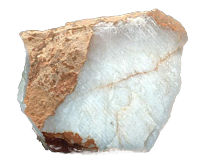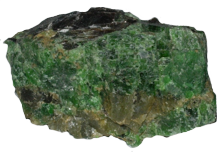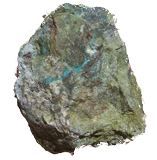![]()
![]()
Throughout the Black Rock area in Nevada one finds every conceivable rock you can think of. Just about all of us have no idea what we are looking at. Our rock collecting is picking up "monkey rocks', those shiny or neat looking peices everywhere. In reality we come across all sorts of interesting things we actually take for granite -granted. This glossary defines many of the rocks we find with accurate descriptions and sometimes photos. Most of these rocks have crystal formations associated with them; which we do not cover. It is not intended to be a Geology Lesson.
A-C • D-F • G-I • J-L • M-O • P-R • S-U • V-X • Y-Z
|
||
|
||
FELDSPAR - is the name given to a group of minerals distinguished by the presence of alumina and silica in their chemistry. This group includes aluminum silicates of soda, potassium, or lime. It is the single most abundant mineral group on Earth. They account for an estimated 60% of exposed rocks, as well as soils, clays, and other unconsolidated sediments, and are principal components in rock classification schemes. The feldspars are a family of silicate minerals which occur in igneous rocks. There are many different members to the feldspar group. Obviously, silicon and oxygen form the foundation for the group, but calcium, sodium, and potassium are also present. All feldspars which have striations are plagioclase, but not all plagioclase has striations. Only orthoclase can be pink or blue, and only plagioclase can be dark gray to black. Feldspar crystals commonly look like a rectangle or an elongated hexagon. Plagioclase is the most common feldspar, and occurs in igneous, metamorphic, and as (uncommon) detrital grains in sedimentary rocks |
 |
|


